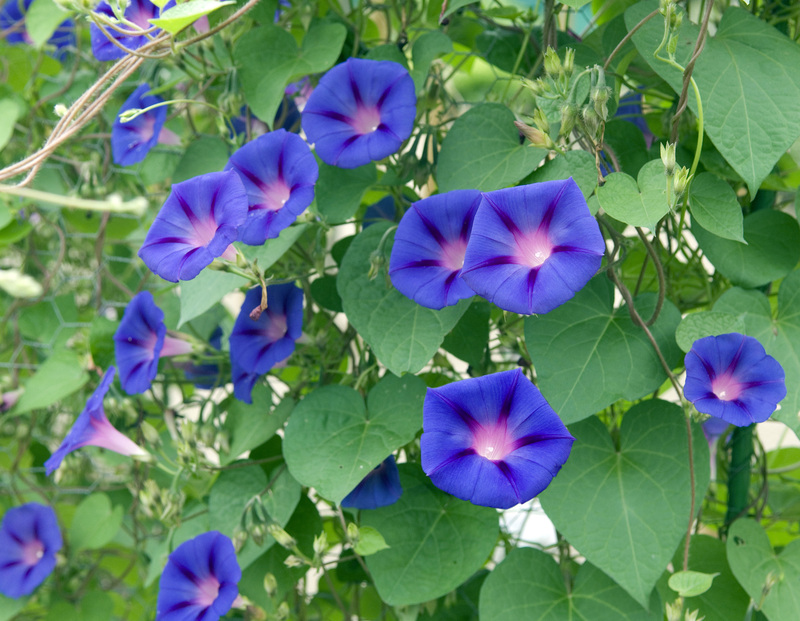New to Lawn Care? Discover Proven Tricks for a Lush Lawn
Are you new to lawn care and seeking expert advice for achieving a vibrant, lush lawn? You're in the right place! Whether you're a first-time homeowner, a gardening enthusiast, or simply want your yard to be the envy of the neighborhood, caring for your lawn doesn't have to be a daunting task. This comprehensive guide will walk you through essential lawn care tips, proven strategies, and actionable steps for a thriving, green landscape.
Understanding the Basics of Lawn Care
Before diving into advanced techniques, let's cover the fundamental principles behind healthy lawn maintenance. A well-maintained yard is more than just aesthetics--it improves air quality, provides a safe play space for children and pets, and even increases your home's value. Let's explore the core elements of lawn care:
The Importance of Lawn Type
Different grass species require specific care routines. Identifying your lawn's grass type is the first step to a lush, healthy lawn.
- Cool-season grasses: Includes fescue, Kentucky bluegrass, and ryegrass. Best for northern climates and thrive in spring and fall.
- Warm-season grasses: Such as Bermuda, St. Augustine, and zoysia. These varieties excel in southern regions and flourish during summer.
Tip: Consult your local garden center or extension office if you're unsure about your grass type.

Proven Lawn Care Tricks for Beginners
1. Soil Testing: The Foundation for Lawn Success
A soil test is the cornerstone of an effective lawn care routine. The test reveals your soil's pH and nutrient profile, ensuring your lawn gets the tailored nourishment it needs.
- Purchase a reliable soil test kit or contact local experts for professional analysis.
- Test in early spring or fall--this allows time to amend the soil before main growing seasons.
- pH Level: Ideal for most grasses is 6.0 - 7.0.
- Amend the soil based on test findings (add lime to increase pH, sulfur to decrease, or specific nutrients if they're lacking).
2. Proper Mowing: More Than Just Cutting Grass
Mowing seems simple, but proper mowing practices are vital to maintain lawn thickness and prevent weeds.
- Follow the "one-third rule": Never cut more than one-third of the grass blade at a time.
- Use sharp blades for a clean cut--dull blades tear the grass, leading to disease and brown tips.
- Vary your mowing direction each time to prevent ruts and encourage more upright growth.
- Keep mower blades at the optimal height for your grass type (usually 2.5-4 inches).
- Leave grass clippings on the lawn for natural fertilization (mulching) unless they're clumping.
3. Smart Watering Techniques for Deeper Roots
A lush lawn requires deep, infrequent watering rather than frequent shallow sprinkles. Here's why:
- Encourages roots to grow deeper, making grass more drought-tolerant.
- Prevents disease and fungal growth associated with constantly wet turf.
- The best time to water your lawn is early morning, as this gives it time to dry before nightfall.
How much to water: Most lawns need 1-1.5 inches of water per week, including rainfall.
4. Fertilization: Feeding Your Yard for Optimal Growth
A balanced fertilization schedule is crucial for lush, green grass. Too much fertilizer can result in burnt patches and pollution, while too little yields a sparse, pale lawn.
- Use slow-release granular fertilizers for steady feeding.
- Follow fertilizer application schedules suited to your grass type (generally, spring and autumn for cool-season, late spring and summer for warm-season grasses).
- Always read labels and avoid applying before heavy rain to prevent runoff.
5. Managing Weeds: Prevention and Control
Weeds not only mar the visual appeal but also compete with grass for water and nutrients. Integrated weed control is key:
- Maintain dense, healthy grass--thick turf naturally chokes out many weeds.
- Hand-pull weeds as soon as you notice them, ideally after rain when soil is soft.
- Apply pre-emergent herbicides in early spring to stop weed seeds before they sprout.
- Spot-treat with post-emergent herbicides if necessary, always following label instructions.
Lawn Maintenance Tips for Every Season
Spring Lawn Care:
- Rake your lawn to remove debris and dead grass ("thatch").
- Aerate compacted soil to let in air and nutrients.
- Apply pre-emergent weed control and a light fertilizer.
- Begin regular mowing as needed.
Summer Lawn Care:
- Water deeply and early in the morning.
- Increase mowing height to shade grass roots from the sun.
- Apply fertilizer to warm-season grasses.
- Watch for pests such as grubs and treat promptly.
Autumn Lawn Care:
- Continue mowing and watering until the grass stops growing.
- Aerate and dethatch if needed.
- Apply fall fertilizer for cool-season grasses.
- Overseed thin or bare areas to prepare for next year.
Winter Lawn Care:
- Keep the lawn clear of leaves and debris to prevent disease.
- Avoid walking on frosty or snow-covered grass.
Note: In milder climates, continue light mowing and watering as needed.
Special Lawn Care Tips for a Greener, Thicker Lawn
Focus on Aeration
Aeration involves perforating the soil with small holes, allowing for improved air, water, and nutrient movement. Aerate your lawn at least once a year, especially in high-traffic areas or if the soil is heavy clay.
- Use a core aerator (available for rent) for best results.
- For cool-season grasses, aerate in early fall; for warm-season, late spring is ideal.
Overseeding for Fuller Coverage
Overseeding--spreading new grass seed over your existing lawn--is an effective way to fill in bare patches and thicken turf. Combine with aeration for superior results!
Dealing with Common Lawn Problems
- Brown or bare spots: Could indicate pests, disease, or drought--inspect soil, water practices, and look for signs of insect invasion.
- Thin grass: Overseed, adjust watering and mowing, and apply appropriate fertilizer.
- Moss or mushrooms: Typically caused by poor drainage and excessive shade--improve sunlight exposure and soil structure.
Effective Pest Management
Common lawn pests--like grubs, chinch bugs, and armyworms--can decimate your lawn fast. Monitor for brown patches or birds pecking at the turf (a sign of grubs).
- Confirm pest presence before applying treatments.
- Use integrated pest management practices--physical, biological, and chemical controls as needed.
- Encourage birds and beneficial insects by cultivating a diverse landscape around your lawn.
Using Natural & Organic Lawn Care Solutions
Many homeowners are choosing sustainable lawn care practices:
- Use compost as a natural fertilizer.
- Consider clover or eco-grass blends to reduce fertilizer and water needs.
- Leave grass clippings on the lawn to recycle nutrients ("grasscycling").
- Minimize chemical use by focusing on soil health and correct mowing/watering.

Frequently Asked Questions About Lawn Care
Q: How often should I mow my lawn?
A: Mow as often as needed to maintain the ideal height for your grass type--generally once per week in peak growing seasons.
Q: When is the best time to fertilize my grass?
A: For cool-season lawns, fertilize in early fall and spring. For warm-season lawns, late spring through summer is preferred.
Q: How do I tell if I am watering enough?
A: Place a shallow container (like a tuna can) on your lawn and run sprinklers until it collects about 1 inch of water. That's typically the weekly requirement.
Q: What height should I set my mower blade?
A: Varies by grass type, but a general rule is 2.5 to 4 inches. Taller grass encourages deeper roots and better weed suppression.
Final Thoughts: Your Path to a Lush, Green Lawn
Mastering lawn care for beginners involves understanding grassroots principles and applying them consistently. By tailoring your approach--testing soil, using proper mowing and watering techniques, fertilizing at the right times, overseeding, and troubleshooting problems--you'll transform your lawn into a lush, green outdoor haven.
Ready to start your lawn care journey? With these proven lawn care tips and tricks, even first-time homeowners can create a thick, vibrant yard. Don't forget: healthy soil, routine maintenance, and a little patience are the ultimate secrets to achieving a beautiful landscape season after season.
Start today, and soon your lawn will be the pride of your neighborhood!